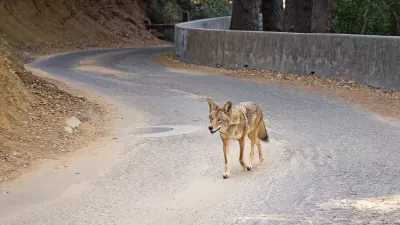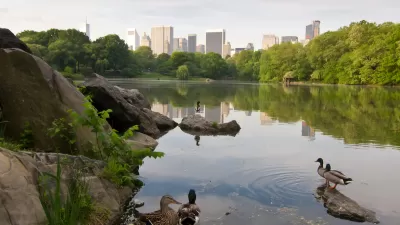Welcome to a post-human era of biological evolution. Strap on your seat belts.

Menno Schilthuizen writes a story of the incredible intersection between built and natural, as seen in the quickening pace of evolution among species living in urban settings.
"For a long time, biologists thought evolution was a very, very slow process, too tardy to be observed in a human lifetime," explains Schilthuizen. "But recently, we have come to understand that evolution can happen very quickly, as long as natural selection — the relative benefit that a particular characteristic bestows on its bearer — is strong."
The city, in its many manifestations, serves as the perfect testing ground, according to Schilthuizen. Now evolutionary biologists are focusing their work in cities, not faraway jungles and other extreme natural environments.
On a final, significant theme, there could be unpredictable evolutionary consequences as cities expand around the world. According to Schilthuizen, "as cities continue to grow, they will exchange more goods, people and information over greater distances. So each change in the environment (a particular pollutant, a certain novelty in road construction, a new kind of food source) will spread quickly across the world, and urban wildlife everywhere will be faced with the same novel challenge. Those that evolve adaptations will also easily spread to other cities, leading to a truly globalized urban flora and fauna — continually evolving at breakneck speed to keep up with an increasingly human-dominated world."
FULL STORY: Evolution Is Happening Faster Than We Thought

Planetizen Federal Action Tracker
A weekly monitor of how Trump’s orders and actions are impacting planners and planning in America.

San Francisco's School District Spent $105M To Build Affordable Housing for Teachers — And That's Just the Beginning
SFUSD joins a growing list of school districts using their land holdings to address housing affordability challenges faced by their own employees.

The Tiny, Adorable $7,000 Car Turning Japan Onto EVs
The single seat Mibot charges from a regular plug as quickly as an iPad, and is about half the price of an average EV.

Seattle's Plan for Adopting Driverless Cars
Equity, safety, accessibility and affordability are front of mind as the city prepares for robotaxis and other autonomous vehicles.

As Trump Phases Out FEMA, Is It Time to Flee the Floodplains?
With less federal funding available for disaster relief efforts, the need to relocate at-risk communities is more urgent than ever.

With Protected Lanes, 460% More People Commute by Bike
For those needing more ammo, more data proving what we already knew is here.
Urban Design for Planners 1: Software Tools
This six-course series explores essential urban design concepts using open source software and equips planners with the tools they need to participate fully in the urban design process.
Planning for Universal Design
Learn the tools for implementing Universal Design in planning regulations.
Smith Gee Studio
City of Charlotte
City of Camden Redevelopment Agency
City of Astoria
Transportation Research & Education Center (TREC) at Portland State University
US High Speed Rail Association
City of Camden Redevelopment Agency
Municipality of Princeton (NJ)





























